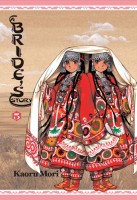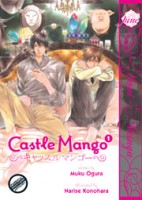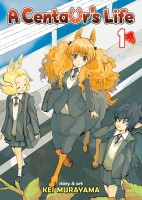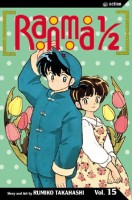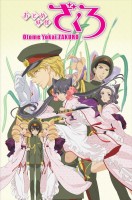My News and Reviews
Last week at Experiments in Manga, I announced the World Trigger Giveaway Winner. As usual for such announcements, the post also includes a thematic list of manga. In this case, I’ve put together a list of some of the manga licensed in English that feature parallel worlds, dimensions, and universes. Speaking of which, last week I also reviewed the first volume of a series that was included on that list–Shuji Sogabe’s Persona 4, Volume 1. I haven’t played any of the Persona 4 video games yet, but the manga adaptation is off to an intriguing start. I’m looking forward to reading more, and I’ll likely give the anime a try as well.
I found quite a few interesting things to read last week. Frederik L. Schodt (whose work I greatly admire) wrote about translating manga for World Literature Today. ICv2 has been busy interviewing folks from the North American manga industry, including a two–part interview with Viz’s Kevin Hamric and another two–part interview with Dark Horse’s Michael Gombos and Carl Horn.
There have been a few interviews with manga creators posted recently, as well. Manga Brog translated an interview with Tsutomu Nihei from earlier this year. Kazuo Koike participated in a Reddit Ask Me Anything. And Kodansha Comics has a new creator interview with Chuya Koyama, the mangaka of Space Brothers. Related to that interview is an autograph sweepstakes and survey about Space Brothers which is a great opportunity to let Kodansha know if, like me, you’d be interested in seeing a print release of the series.
In licensing news, Seven Seas slipped in an announcement for Kanekiru Kogitsune and Kobayakawa Haruyoshi’s Re:Monster manga adaptation. There’s also currently an Indiegogo campaign to add an English dub to and generally improve the quality of the upcoming North American DVD and Blu-ray release of the Skip Beat! anime adaptation.
Quick Takes
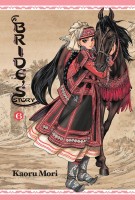 A Bride’s Story, Volumes 6-7 by Kaoru Mori. Every time I pick up A Bride’s Story I can’t help but be impressed by Mori’s stunningly detailed and beautiful artwork. The manga is gorgeous to look at, but the storytelling is lovely as well. These two volumes fall at the opposite ends of the spectrum when it comes to tone, but they’re both still wonderfully engaging. Though it has its quiet moments, the sixth volume is dominated by exciting action sequences and battles as Amir’s original clan struggles to find a way to survive now that it has lost access to grazing lands. The intensity of the sixth volume isn’t found in the seventh, but there’s still plenty of drama as the series shifts to follow more of Mr. Smith’s journey. The story itself focuses Anis, a young Persian woman whose husband is quite wealthy. Because of this she leads a somewhat lonely and secluded life until, at the urging of her maid, she starts going to the public baths where she can spend more time with other women. (Much of the volume takes place at the baths, so there is a fair amount of tasteful nudity.)
A Bride’s Story, Volumes 6-7 by Kaoru Mori. Every time I pick up A Bride’s Story I can’t help but be impressed by Mori’s stunningly detailed and beautiful artwork. The manga is gorgeous to look at, but the storytelling is lovely as well. These two volumes fall at the opposite ends of the spectrum when it comes to tone, but they’re both still wonderfully engaging. Though it has its quiet moments, the sixth volume is dominated by exciting action sequences and battles as Amir’s original clan struggles to find a way to survive now that it has lost access to grazing lands. The intensity of the sixth volume isn’t found in the seventh, but there’s still plenty of drama as the series shifts to follow more of Mr. Smith’s journey. The story itself focuses Anis, a young Persian woman whose husband is quite wealthy. Because of this she leads a somewhat lonely and secluded life until, at the urging of her maid, she starts going to the public baths where she can spend more time with other women. (Much of the volume takes place at the baths, so there is a fair amount of tasteful nudity.)
 Tokyo ESP, Omnibus 1 (equivalent to Volumes 1-2) by Hajime Segawa. It took me a couple of chapters to completely warm up to Tokyo ESP, but by the end of the first omnibus I was completely engaged. Segawa’s artwork doesn’t particularly grab me, but I’m immensely enjoying the quirkiness of the manga’s characters and the weirdness of its story. Tokyo ESP is ridiculous in a good sort of way. One morning, Rinka wakes up to discover that she has the ability to pass through physical objects. She’s not the only Tokyoite to have suddenly gained strange superpowers, but Rinka does appear to be one of the few to try to use her newfound skills for justice rather than personal gain. Though reluctant at first, wishing that she could just go back to normal, Rinka is quite capable and soon finds herself caught up in gang war fighting other espers. Tokyo ESP is a violent, action-packed series with a goofy sense of humor. Rinka can literally kick ass, but she also gets her fair share of beatings. The manga can actually be surprisingly brutal at times.
Tokyo ESP, Omnibus 1 (equivalent to Volumes 1-2) by Hajime Segawa. It took me a couple of chapters to completely warm up to Tokyo ESP, but by the end of the first omnibus I was completely engaged. Segawa’s artwork doesn’t particularly grab me, but I’m immensely enjoying the quirkiness of the manga’s characters and the weirdness of its story. Tokyo ESP is ridiculous in a good sort of way. One morning, Rinka wakes up to discover that she has the ability to pass through physical objects. She’s not the only Tokyoite to have suddenly gained strange superpowers, but Rinka does appear to be one of the few to try to use her newfound skills for justice rather than personal gain. Though reluctant at first, wishing that she could just go back to normal, Rinka is quite capable and soon finds herself caught up in gang war fighting other espers. Tokyo ESP is a violent, action-packed series with a goofy sense of humor. Rinka can literally kick ass, but she also gets her fair share of beatings. The manga can actually be surprisingly brutal at times.
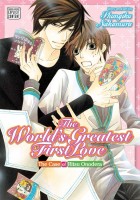 The World’s Greatest First Love: The Case of Ritsu Onodera, Volumes 1-3 by Shungiku Nakamura. I know quite a few people who we extraordinarily pleased when SuBLime announced that it would be releasing The World’s Greatest First Love. It was their enthusiasm that led me to giving the manga a try–I had read and even enjoyed parts of Nakamura’s earlier series boys’ love series Junjo Romantica, but overall I wasn’t especially enamored with it so I wasn’t necessarily intentionally seeking out more of the creator’s work. But I will admit, so far I am consistently amused and entertained by The World’s Greatest First Love even if I am more interested in the series’ hilarious (and I’m told accurate) portrayal of the inner workings a shoujo magazine than I am in any of the manga’s dubious romances. The World’s Greatest First Love works best for me when it’s a bit over-the-top and not trying to be taken too seriously. Though the anatomy of the characters can occasionally be rather awkward, Nakamura excels at reaction shots and the artwork is well-suited for a comedy.
The World’s Greatest First Love: The Case of Ritsu Onodera, Volumes 1-3 by Shungiku Nakamura. I know quite a few people who we extraordinarily pleased when SuBLime announced that it would be releasing The World’s Greatest First Love. It was their enthusiasm that led me to giving the manga a try–I had read and even enjoyed parts of Nakamura’s earlier series boys’ love series Junjo Romantica, but overall I wasn’t especially enamored with it so I wasn’t necessarily intentionally seeking out more of the creator’s work. But I will admit, so far I am consistently amused and entertained by The World’s Greatest First Love even if I am more interested in the series’ hilarious (and I’m told accurate) portrayal of the inner workings a shoujo magazine than I am in any of the manga’s dubious romances. The World’s Greatest First Love works best for me when it’s a bit over-the-top and not trying to be taken too seriously. Though the anatomy of the characters can occasionally be rather awkward, Nakamura excels at reaction shots and the artwork is well-suited for a comedy.
